- M.A, Abe
- News
- 2849 views
- 4 comments
Rugs are one of the biggest and main components in interior decoration, but these ornamental textiles need to be washed and cleaned due to big foot traffic, pets, food, spilled drinks, spills, stains, and dirt. This guideline will assist you with effectively cleaning your rug without causing any harm to its fabric whatever the type.
Table of Contents
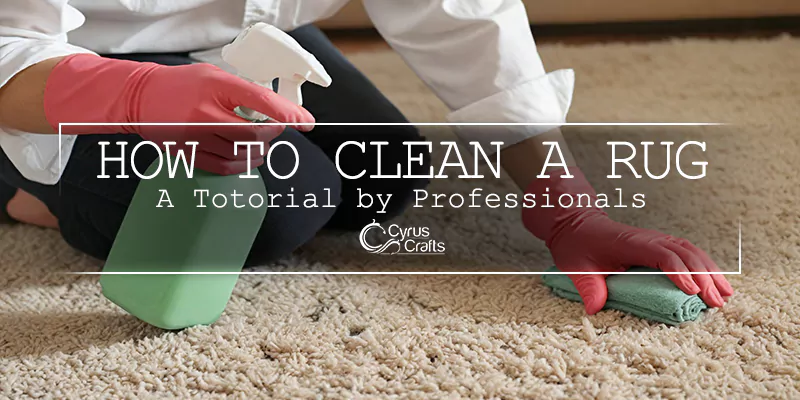
Understanding the Rug Types
Let it be mentioned that there are various types of rugs and they should be cleaned using unequal methods. Let’s start with the different characteristics of rug types and the things you should or shouldn’t do to each one.
Here are the different types of rugs based on their weaving materials:
- Wool Rugs: Prized for their ability to last a long time and to blend in with their environment and therefore do not show dirt or stains easily. If your handmade rug has a tear, rot, or any other defect, you should fix this defect before washing it.
- Silk Rugs: Elegant and difficult to clean, silk rugs are highly susceptible to water and heat, so do not steam clean, alkalis, or expose the rugs to extremely high temperatures.
- Polyester Rugs: Polyester rugs are popular because they are quite resistant to stains, and therefore, long-lasting. These rugs are also more resistant to traffic and can be vacuumed more often and often even machine washed.
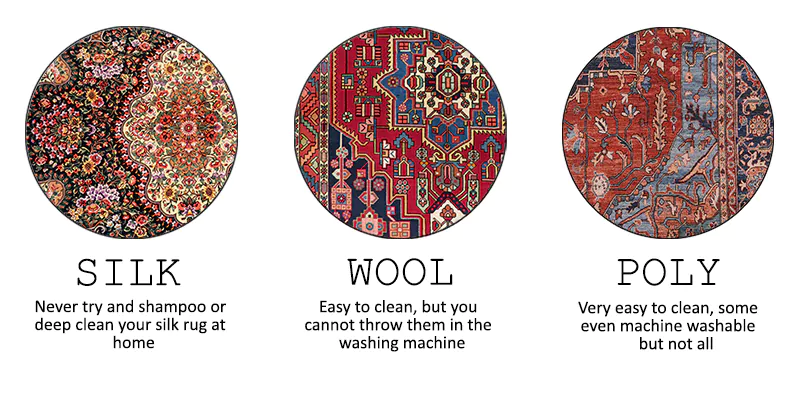
Cyrus Crafts; Luxury & Unique Products
Here are the different types of rugs based on their weaving techniques:
- Handmade Rugs: Low powered vacuum is used to off dirt and grains that may be on the surface of the fibers. For a deep clean, it is useful to contact professionals since some of handmade rugs cannot stand water or strong cleaning products.
- Machine-Made Rugs: They are less fragile and in most cases easier to clean as compared to handmade ones. Usually, they are woven with a pattern and look quite homogeneous, and can be regularly cleaned with almost any cleaning solution.
- Gabbeh Rugs: Gabbeh is a type of woolen hand-knotted rug with thick piles and they are a little bit hard to clean.
- Kilim Rugs: Kilim rugs do not have a pile so it will not be so hard to clean them. Outdoor vacuuming or shaking can often help to get rid of most of the dirt and grits.
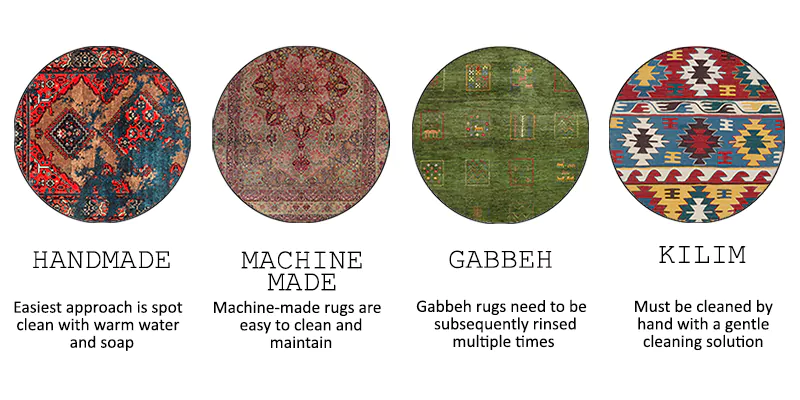
Rug Cleaning Supplies and Tools
Ensuring proper cleaning tools and cleaning solutions will go a long way towards the efficiency of the process. Now let us look at the implements and cleaning agents that are most relevant to rug cleaning exercises.
Rug Cleaning Tools
To clean your rug properly, you'll need a few tools:
- A vacuum cleaner
- A rake or stand
- Microfiber cloths (optional)
- Gloves
- A bucket or portable storage container
- A soft-bristled brush
- A squeegee or roller
Rug Cleaning Solutions
Selecting the right product is VERY IMPORTANT to avoid damaging the rug while cleaning it. Here are some options to consider:
- All-purpose cleaner: Choose a mild, non-acidic soap suitable for different types of rugs.
- Specialized rug shampoo: These are made specifically for rug and carpet cleaning.
- Stain removers: Great for dealing with various stains like coffee, wine, or urine.
- White vinegar: Effective for mild cleaning and odor removal.
- Oxygen-based cleaners: Useful for stains and odors that are hard to remove.
Alternative: You can also make a simple rug cleaning solution on your own. Pour 2 tablespoons of liquid laundry detergent, 1/4 cup of all-purpose cleaner, 1 scoop (approximately 3 tablespoons) of oxygen-based cleaner, and 1 teaspoon of fabric softener, into warm water in a bucket. Such a home remedy is equally as efficient as purchasing commercial cleaning agents and costs much less.
Note: Always try the cleaning solution on a hidden section of the rug to ensure it doesn’t alter the color or harm the fabric.
Step 1: Preparing the Rug for Cleaning
It is always important that you prepare your rug before you clean it. This step is relevant to guarantee that your rug is clean to the best extent possible without suffering any damage along the way.

Correct Vacuuming
Vacuuming the rug before the actual cleaning process will assist you in reducing extraneous matter such as loose dirt, dust, and debris that hinders the cleaning process. Here's how to do it effectively:
- The most effective vacuum cleaner is one that has a beater bar, so, ensure that you use one. If you have pets in your home, move the brush attachment around the area rug to eliminate remaining pet hair.
- Vacuum both sides of the rug. Start with the bottom part to clean up debris stuck between its weaves and then right the surface to vacuum.
- Take your time and go over an area more than once to make sure you’re getting all the dirt that you can.
- In the case of delicate rugs for instance antique or wool rugs, you may need to take a little softer approach. It is recommended to adjust the vacuum cleaner to a low setting or use a soft brush head meant for cleaning upholstery so as not to damage the fibers.
Shaking or Beating the Rug
Shaking and beating may be the most efficient technique for cleaning the rug and making it free from dirt. It is most effective for small rugs that you can lift and take outside for washing or cleaning as required. Here is how to do it:
- Move your rug from the house to an open space.
- Spread the rug on a washing line, balcony rail, or any place where you can hang it properly.
- Now, using a carpet beater a tennis racket, or any other similar object rigorously beat the rug.
Note: It is an excellent technique since it can clean parts of the rug where even the larger particles of dust have sunk into the fibers. When you shampoo the rug, you will be shocked by how dirty the water that comes out of it is.
Step 2: Spot Cleaning the Rug
The problem is that even if you clean the rug frequently you may find some stains appear on the rug. These stains should be treated as early as possible to avoid the formation or setting of the stains. However, before starting you need to test your rug for colorfastness:
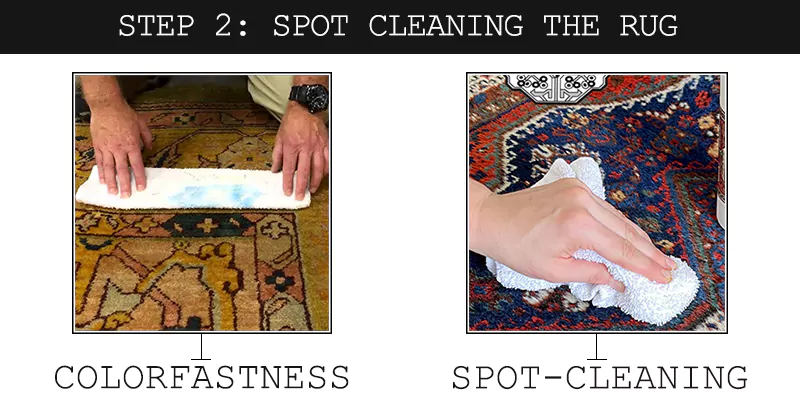
Checking for Colorfastness
For most rug cleaning techniques it is important to test for colorfastness of the rug before applying any cleaning solution. This test helps to know how much your rug dyes will fade, wash, blend, crinkle, or shrink when subjected to water or any cleaning agents. Here's how to perform a colorfastness test:
- Focus on a small area of the rug that is least likely to be seen by anyone such as the corner, or the area behind the furniture.
- Squeeze some warm water from a clean white cloth.
- Then place the damp cloth over the rug and press it down for some time.
- Check the cloth and see if there is color that has transferred from the rug.
- Do the same thing with any of the cleaning solutions, which you propose to use.
- You should pay attention to some indicators, such as color transfer during this test then it means your rug is not colorfast. The best approach to handling this therefore requires calling in professional cleaning services to avoid further hazards to your rug.
- In the case of expensive and rare rugs it is always better to look for a professional cleaner.
Starting to Clean the Rug
If everything goes well, it is time to effectively spot-clean the rug:
- Apply the Solution: A spray bottle can be used for applying the cleaning solution. Use the clothes gently when washing the rug to avoid wetting it too much and to avoid having the rug fibers or the backing become damaged.
- Remove the Stain (Don't Rub): In every case, always dab the stain with a clean, white cloth. Rubbing spreads the stain deep into the rug fibers and at the same time wears out the rug fibers.
- Remove the Solution: Finally, clean the stain area with clean water and remove the solution by gently pressing it with a clean cloth or paper towel.
Step 3: Deep Cleaning the Rug
As you are through with regular cleaning, sometimes it is necessary to clean these rugs to the deepest part. This process will assist you in making your rug look as it was again in the past and last longer. Let's go through the steps to deep clean your rug effectively:
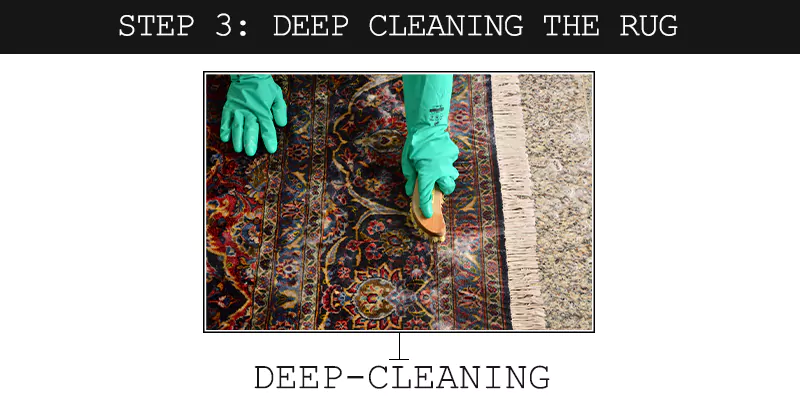
- Spread a tarp on a flat area.
- Lay the rug on top of the tarp, so that it doesn’t accumulate more dust than it strictly needs to.
- The cleaning solution may be used by scrubbing the rug with a sponge or pouring some of the solution into a watering bucket.
- Allow for the solution to rest on the rug for roughly five minutes.
- Then gently scrub the rug making sure not to cause damage to the rug fibers.
- For any areas that may be stained or have marks, it is advisable to put a little extra effort.
- After that use the roller to get as much cleaning solution and water off the rug as possible. Move from one end of the rug to the other end always pulling the squeegee in the direction of you for the best liquid extraction.
Extra: In case of facing hard stains, remember that you may be required to re-do the whole process again.
Note: Remember that this is a very thorough cleaning process that will require careful attention. If you are unsure how to clean the rug yourself and it is valuable or delicate, you are advised to seek professional help.
Step 4: Rinsing and Drying the Rug
After cleaning your rug, it's crucial to rinse and dry it properly to ensure a thorough clean and prevent damage. Let's explore the proper techniques for rinsing and drying your rug:
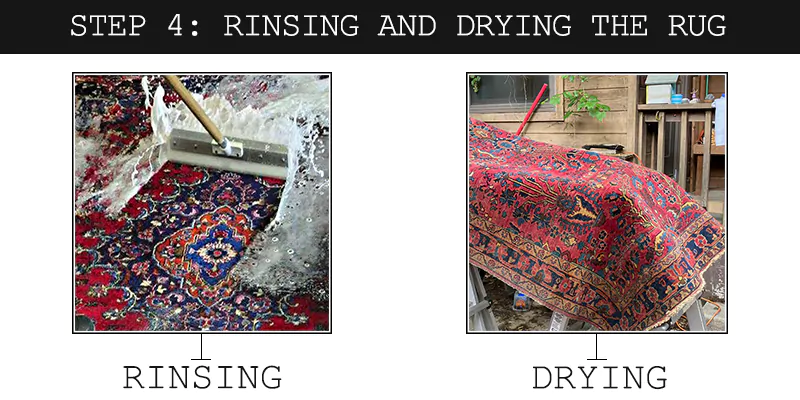
Rinsing the Rug
The final step of the cleaning process is to ensure that the entire rug is rinsed with clean water to get rid of any cleaning solution. Here's how to do it effectively:
- If cleaning outside then you should use a hose that has a nozzle on the end. Covers this end of the rug to the other, making sure that the cleaning solution is removed.
- Make sure to continue the rinsing until the water coming out is clear in color. They point out that there is no trace of cleaning solution residues left.
- For indoor cleaning of the rug, use pails of clean water to wash the rug with. Just make sure that the water is changed often so that the cleaning solution can be washed away.
- It is recommended to evacuate excessive water using the wet-dry vacuum, if available. Use the roller to perform a stroke in the direction across the rug pile in parallel lines.
Drying the Rug
This is something important because it maintains the shape of the rug and prevents the growth of mold or mildew. Here are some effective drying methods:
- Air Drying: You can use two sawhorses, sturdy chairs, or bed risers to provide a height for your rug to dry on. This makes it possible to air the two sides of the rug but it will take some while for the rug to get fully dried.
- Outdoor Drying: If this is possible, it is better to put the rug in a direct sunlight area. Of course, sunlight also comes in handy not only in regard to drying but in sanitizing the rug as well. But remember, overheating can lead some dyes to fade, so it is advisable not to expose them under direct sunlight for very long.
- Using Fans: Use box fans or any other fans to provide better circulation and make the drying process quicker. Place stands so that the fans will blow air across the surface of the rug.
Tip: Periodically turn the rug over, to get more even drying. Allow it to dry up completely then flip over in order to dry the opposite side.
Note: Avoid blow-dryers or heaters at close range, as rug fibers can be harmed and some rugs end up shrinking. Also, remember that you have to wait until the rug is thoroughly dry before placing it in. This is because damp rugs would develop mold which will cause bad smells. Then again for silk or antique oriental rugs, it is advised to look for the services of a professional cleaner.
FAQs
How do I clean my rug on my own at home?
To clean your rug at home all you have to do is to read this section.
What solution should I use to soak my rug for cleaning?
For cleaning your rug, you can use a mild dish soap diluted with water. For more information about what cleaning solution is best for your rug, you can read this section.
What is the safest way to clean a rug without damaging it?
To safely clean your rug without causing damage, first vacuum it thoroughly. Then, use white vinegar to spot-clean it. But it is advised to use professional help to prevent any kind of damage.
CyrusCrafts Rugs Chain Store: North America
CyrusCrafts NA is seriously pleased to show you the evolution of Persian rug chain stores in North America. The mission has always been to bring beauty and craftsmanship of the most exquisite Persian carpet to homes and offices and we are glad we have done this in several key locations.
CyrusCrafts Toronto, Ontario Online Rug Store
Since we opened our store a couple of years ago, people who are interested in rugs and the arts in Toronto, Ontario have come to know us well.
From the elegant round rugs placed at the doorsteps of classy houses to the bright and stunning area rugs placed in the living room, we offer an enormous stock of Persian rugs in Toronto that match every individual preference.
CyrusCrafts has always kept its customers satisfied by providing the highest quality Persian hand-woven and machine-woven carpets, using the best raw materials in carpet weaving, and proud cooperation with the most prominent traditional Iranian carpet weavers. You can order your favorite carpet from us and get it delivered in the fastest time in Canada and USA.








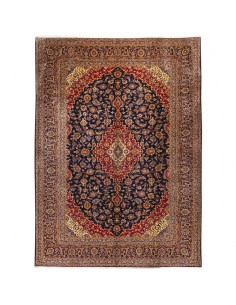

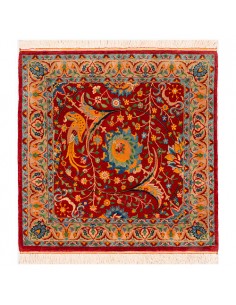

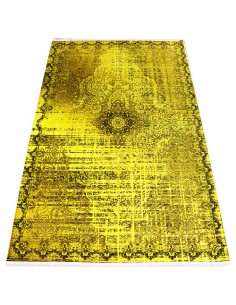

Comments (4)